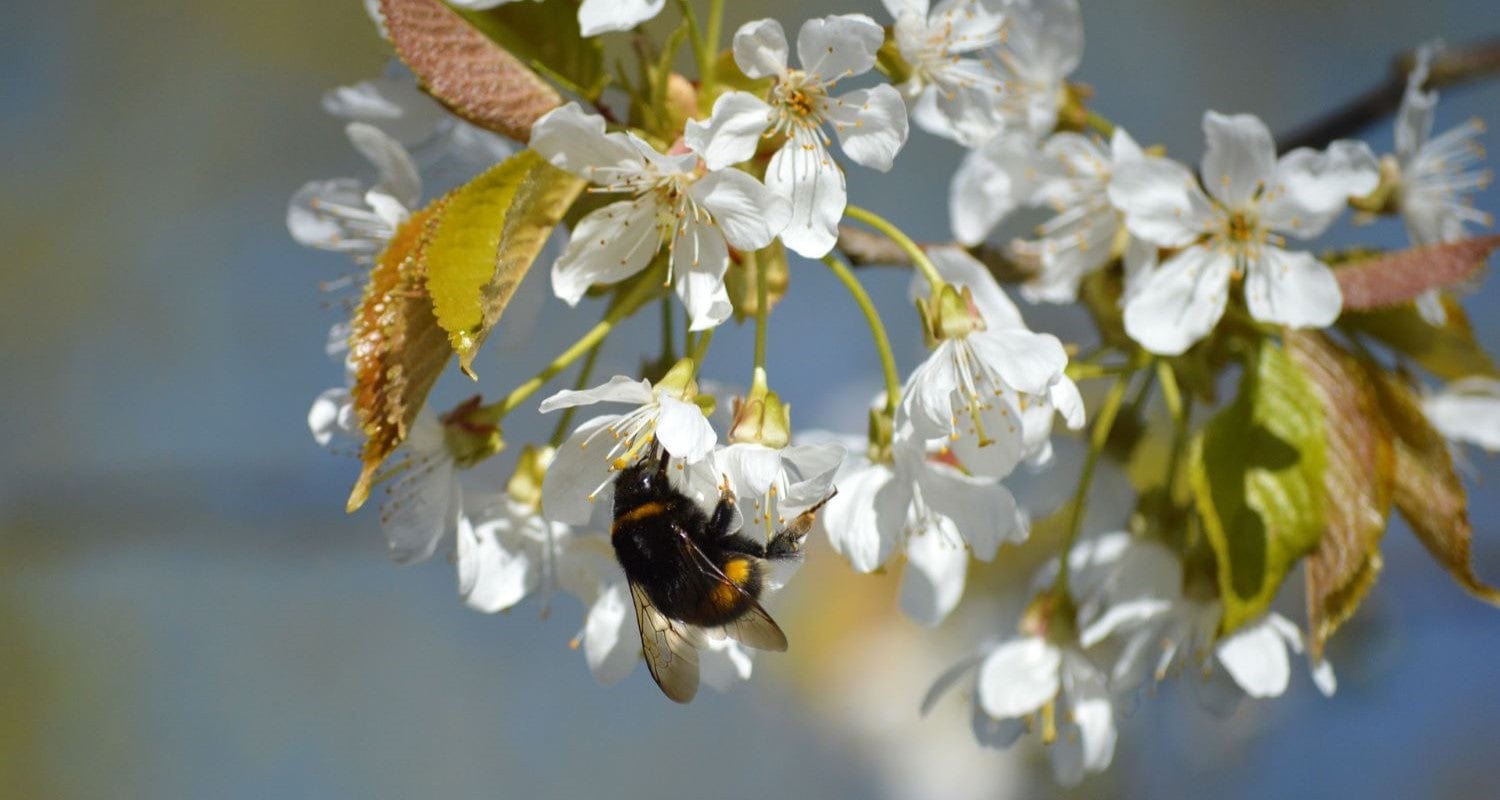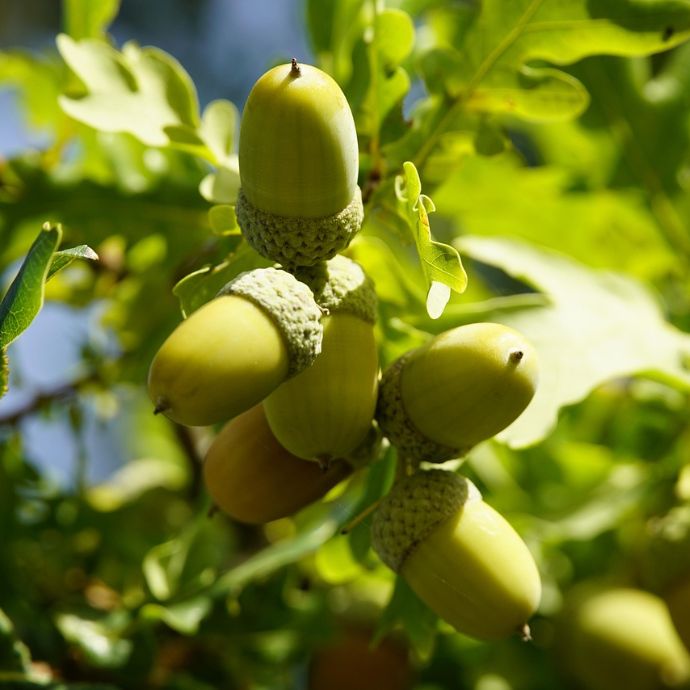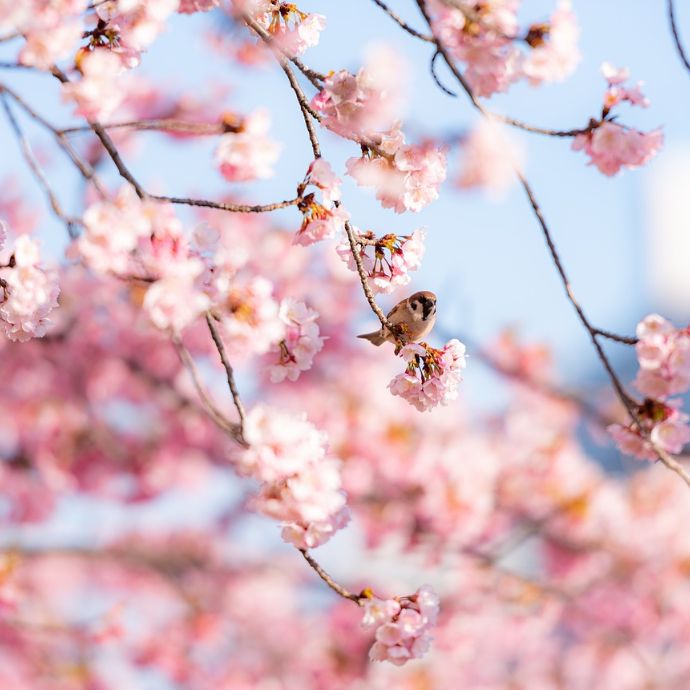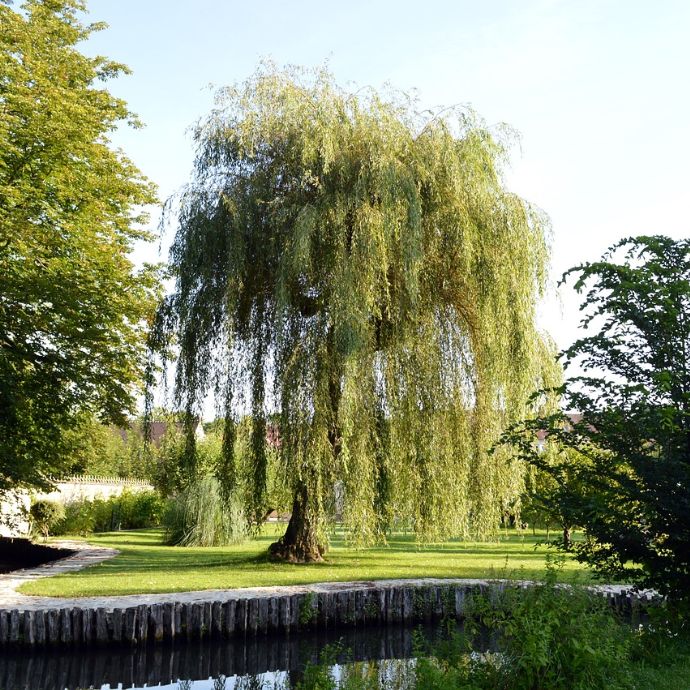Advice & Inspiration
Self Pollinating Apple Trees? Your Guide to Apple Pollination Groups

You may have seen some apple trees described as self pollinating or self fertile. What does that mean? And does it mean that non self-fertile trees won’t produce fruit? Don’t worry - in this article I’ll explain the basics of apple pollination, how it affects your choice of tree (spoiler: not as much as you’d think) and how to make it work to your advantage.
Jump to:
- How pollination works
- How close trees need to be
- Types of apple trees
- Pollination groups
- Benefits of pollination partners
- When pollination goes wrong
- Can pears pollinate apples?
- Should you worry about pollination?
How are apple trees pollinated?
Trees only produce fruit if they’re pollinated by insects (such as bees, wasps and beetles) transferring pollen between the anthers of their flowers to the stigmas. So far so good, but as most apple trees are not self fertile, these insects have to carry pollen between different trees and mix the two together before apple tree pollination can happen. Sounds like a recipe for disaster as opposed to crumble, until you consider that bees can fly distances of up to two miles a day, transferring pollen from every flower they can get their furry behinds into along the way.
How close together do apple trees need to be?
You’ve heard the saying “you’re never more than six feet away from a rat”. Well this kind of applies to apple trees too. With some fruit trees, if you’ve only got room for one, it needs to be a self fertile variety because there aren’t many of the same tree around. However, apple trees are so common in the UK that you don’t need to worry too much about there being a tree nearby to pollinate yours - and that can be a wild crabapple tree or hedge too. The best results seem to come about when trees are no more than 18m apart, but so long as there’s not more than a mile between them, you’ll be fine.

Types of apple trees
Apple trees can be self fertile, partially self fertile or not self fertile - make sure you choose the right one for your garden to get the best possible harvests.
Self fertile apple trees
These trees produce good crops all on their own without needing another tree to pollinate them - although they’ll produce even more if they do have a pollination partner. They’re the ones to choose if you’ve only got room for one tree and you’re in a remote area where there’s unlikely to be another apple tree within a mile. They include varieties like Braeburn, Sunset, Falstaff, Queen Cox, Red Devil and Scrumptious. Even better, as well as fertilising themselves, these trees can also fertilise each other. Everyone’s a winner.
Partially self fertile apple trees
‘Partially self-fertile’ means that the tree is able to produce fruit on its own but if you have another tree nearby to pollinate it, they’ll both have bigger crops. Some partially self fertile apples include Egremont Russet, Golden Delicious, James Grieve, Grenadier and Laxton’s Superb.
Apple trees that need a pollination partner
If you’re in a built up area where there’s likely to be another apple tree within a mile, you don’t need to worry about this, but if you’re in a more remote place, you’ll need to plant a suitable pollination partner with these as they can’t produce a crop by themselves nor pollinate any others. These are sometimes referred to as triploid trees and include varieties like Jonagold, Ashmead’s Kernel and Bramley’s Seedling. Strictly speaking, they need two other apple varieties nearby to pollinate them, but if you think about the number of UK gardens that only have a (perfectly productive) Bramley tree, you can see what a miniscule problem this is in practice. It’s a perfect example of the ‘you’re only ever six feet/one mile away from an apple tree’ principle.

Which apples pollinate each other? Apple pollination groups
Your apple tree can be pollinated by another variety of the same group (flowers at the same time) or one from either side of their own. For example, a Katy apple tree (group C) can pollinate an Egremont Russet (B) or Jonagold (D) and vice versa. These are some examples from each group.
|
Group A |
Bountiful |
|
Group B |
Egremont Russet |
|
Group C |
Beauty of Bath, Cox’s Orange Pippin, Discovery, James Grieve, Katy, Lord Lambourne. Falstaff, Red Windsor, Worcester Pearmain |
|
Group D |
Ashmead’s Kernel, Blenheim Orange, Golden Delicious, Jonagold, Laxton’s Superb, Pitmaston Pineapple |
|
Group E |
Braeburn |
PoF (Plenty Of Fruit)
These are just some of the apple varieties our growers produce - you can check here to find more potential pollination partners for your apple tree. Alternatively, just plant a crabapple tree - they’ll pollinate any other apple variety and our growers wouldn’t be without them!
The benefits of pollination partners
If you do have the space for more than one tree, I’d always say go for it. The pollinators won’t have far to go to cross-pollinate your trees, and this will result in a bigger apple crop from both trees. You can increase your chances even further by planting lots of flowers nearby to attract the bees. Plants like lavender, achillea, foxgloves and verbena are guaranteed to get our stripy friends making a beeline for your garden.

When pollination goes wrong
Sometimes you do everything right but your trees don’t produce much fruit. This can be due to several factors that affect pollination.
Cold weather
If you’ve got plenty of blossom but no fruit, a cold snap could be the culprit. Apple trees need temperatures above 12°C for their blossom to form properly, and even if it forms, it can be killed off by a late frost. Additionally, bees and other pollinators don’t like the cold any more than we do, so tend not to be active in lower temperatures.
If you have this problem, you could try a variety such as Falstaff, which will cope with lower temperatures, or one which blossoms later than most, such as Braeburn.
Windy weather
If your tree blossoms early, it can be at risk of the blossom being blown off by winds before it has the chance to be pollinated. If you do have an early blossoming tree and you’re worried about this, you can try wrapping your tree gently with horticultural fleece or bubble wrap until the risk has passed.
Incompatible trees nearby
This is a more unusual problem, but it’s possible that all the trees within a one mile radius of yours are the wrong kind. If you suspect this is the case, you can fix the problem temporarily by bringing some blossoming crabapple branches from further away into your garden and positioning them in a pot near your trees. It’s a quick fix, but if it works you could look at planting a crabapple tree of your own for the following year.
Can a pear tree pollinate an apple tree?
This would be pretty cool, but sadly not. The two trees may flower at the same time and look similar, but they’re genetically different, with apples coming from the malus family and pears from the pyrus, so cross pollination isn’t possible.
So do I need to worry about pollination?
A lot of words are spoken and typed regarding pollination, but for all the reasons outlined above, in 90% of cases you will not have to think about it at all. Barring the problems outlined above, I find it helps to think of pollination partners as a useful tool for increasing apple harvests as opposed to something to worry about (and a good excuse to plant another apple tree!).



















